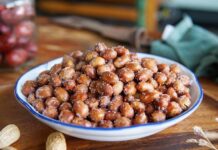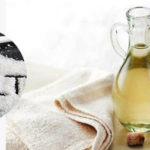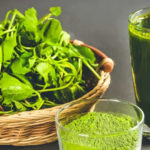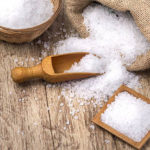The saying “Salt can create a hundred flavors” from the ancient people is not just a proverb, but also contains profound values and diversity of salt. The main component of table salt is sodium chloride, which not only acts as a basic seasoning to enhance the taste of food, but also plays an important role in the nervous system to transmit information in the human body.
The necessary salt intake for the human body under normal conditions ranges from 3g to 5g per person per day. However, due to lifestyle habits and individual taste preferences, many people consume salt in excess of this standard, reaching about 10g to 15g per person per day.

When it comes to buying salt, the market provides two main types, which are sea salt and table salt. However, not everyone understands the difference between these two types of salt and how to choose when cooking. Understanding the specific differences between sea salt and table salt will help adjust the diet scientifically and choose the right salt type according to individual needs.
Sea Salt
Sea salt, as the name suggests, is salt produced from seawater through the evaporation process, without undergoing deep processing, so it has a coarse, crispy texture with large grains. It is harvested from clean, unpolluted coastal areas. In terms of nutritional composition, sea salt mainly contains sodium chloride and retains many minerals such as iodine, zinc, potassium, iron, and phosphorus.
Sea salt, in general, does not contain other additives, which ensures safety when used. However, due to the large grains, sea salt is often less preferred because besides the salty taste, many people do not like these large grains.
In addition to sea salt, there are other types of salt produced by different methods such as:
Pond salt: Directly extracted from salt ponds or made by sun-drying saltwater from salt ponds.
Well salt: Created by drilling wells to extract saltwater from underground.
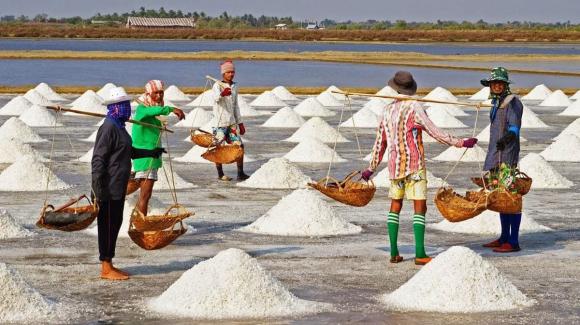
Although there are different mining methods, pond salt and well salt also have sodium chloride as the main component. In terms of nutrition, there is no fundamental difference between these 3 types of salt, because the main purpose of using salt is to provide sodium ions from table salt, regardless of the production method.
Table Salt
Table salt is processed based on raw salt, going through evaporation, cleaning, drying, and bleaching steps to create sodium chloride crystals. Due to the technical processing, refined table salt usually contains fewer impurities than sea salt, but some trace elements are lost during the refining process.
However, to meet the body’s nutritional needs, some elements such as iodine or sodium are often added during the production of refined table salt. Based on these components, refined table salt is divided into three main types on the market:
Iodized salt: Containing mainly iodine and sodium. Not suitable for people with thyroid problems such as goiter, thyroiditis, and autoimmune thyroid diseases.
Low sodium salt: Sodium content reduced below 65%, usually added with potassium chloride and magnesium sulfate to improve the balance of sodium, potassium, and magnesium in the body, preventing high blood pressure. Suitable for people at high risk of hypertension.
Non-iodized salt: Intended for people living near the sea and consuming a lot of seafood, with enough iodine from daily food and drinks. Suitable for people with some thyroid problems.
Depending on the specific needs and requirements of the family, we can choose the appropriate type of salt for the daily diet. Note that the main purpose of using salt is to enhance the taste of food and meet the essential sodium needs of the body, and most importantly, to control the amount of salt in the food.















